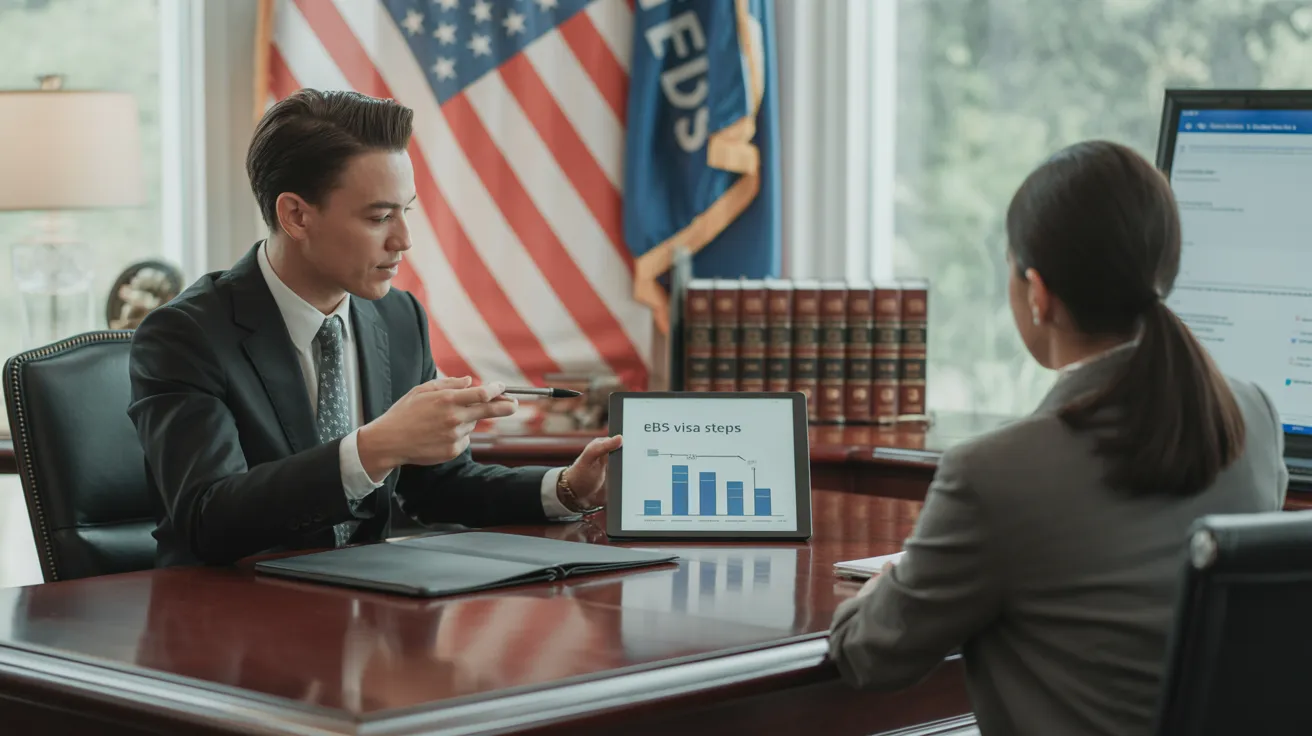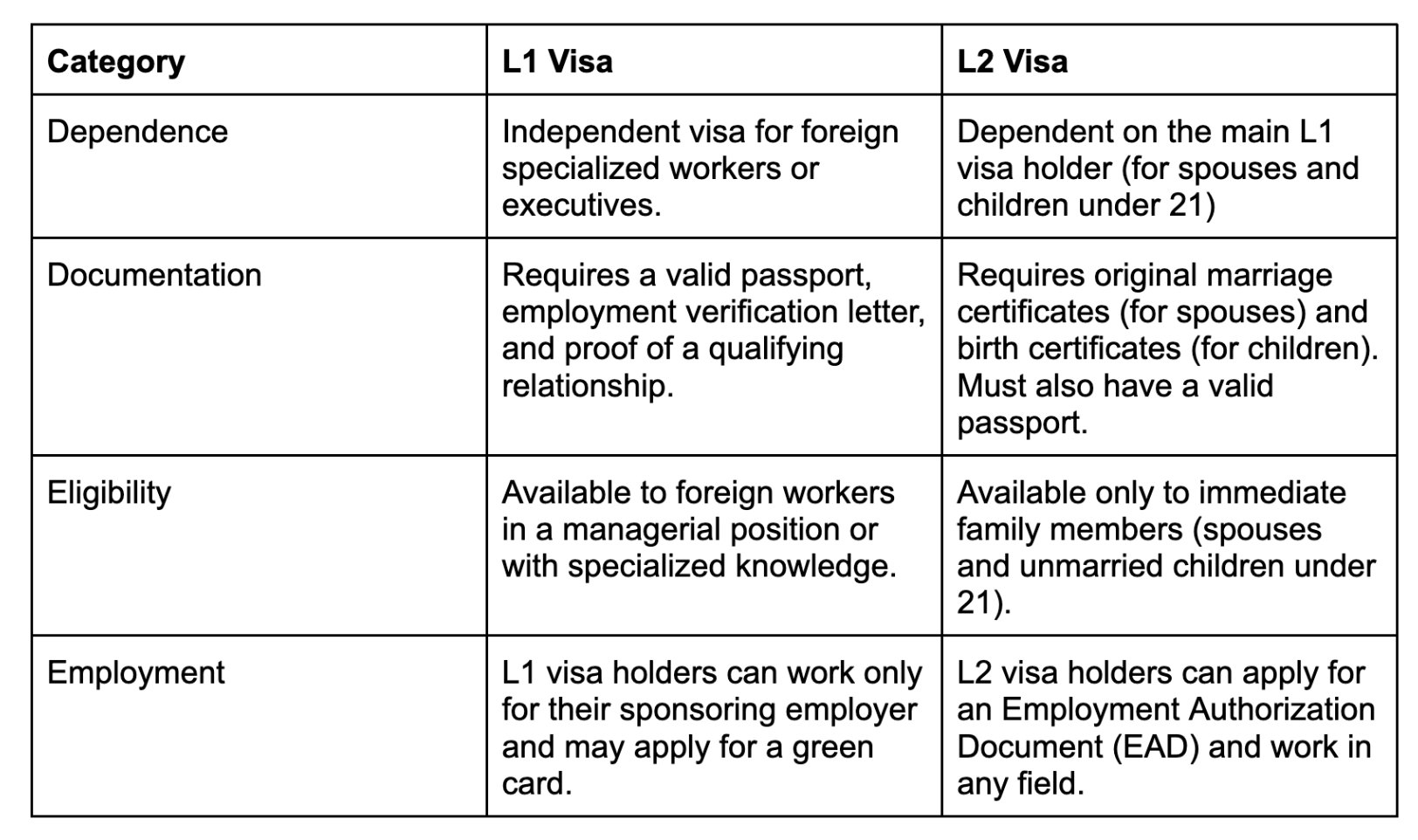What Does L1 Visa Do?
Table of ContentsLittle Known Facts About L1 Visa.A Biased View of L1 VisaThe Buzz on L1 VisaThe Definitive Guide to L1 VisaSome Known Questions About L1 Visa.The 15-Second Trick For L1 Visa
Offered from ProQuest Dissertations & Theses International; Social Science Premium Collection. DHS Office of the Examiner General. Obtained 2023-03-26.
U.S. Division of State. Recovered 2023-02-08. Tamen, Joan Fleischer (August 10, 2013).
10 Easy Facts About L1 Visa Shown
In order to be qualified for the L-1 visa, the international firm abroad where the Recipient was used and the U.S. firm must have a qualifying relationship at the time of the transfer. The various types of certifying relationships are: 1.
Firm An owns 100% of the shares of Company B.Company A is the Parent and Company B is a subsidiary. There is a certifying connection between the two firms and Business B need to be able to fund the Recipient.
Instance 2: Business A is integrated in the U - L1 Visa.S. and wishes to petition the Recipient. Firm B is incorporated in Indonesia and employs the Recipient. Business An owns 40% of Firm B. The staying 60% is had and regulated by Business C, which has no relation to Company A.Since Company A and B do not have a parent-subsidiary relationship, Company A can not fund the Beneficiary for L-1.
Business A has 40% of Firm B. The staying 60% is owned by Business C, which has no connection to Business A. However, Firm A, by formal contract, controls and full handles Business B.Since Firm A has much less than 50% of Company B yet manages and controls the firm, there is a qualifying parent-subsidiary connection and Firm A can fund the Recipient for L-1.
7 Easy Facts About L1 Visa Explained
Associate: An affiliate is 1 of 2 subsidiaries thar are both had and regulated by the same parent or person, or had and controlled by the same group of people, in primarily the exact same ratios. a. Instance 1: Company A is included in Ghana and employs the Beneficiary. Business B is included in the U.S.
Firm C, additionally integrated in Ghana, has 100% of Company A and 100% of Firm B.Therefore, Company A and Company B are "associates" or sister companies and a qualifying partnership exists in between the two firms. Firm B need to be able to sponsor the Beneficiary. b. Instance 2: Firm A is integrated in the united state
Company A is 60% possessed by Mrs. Smith, 20% possessed by Mr. Doe, and 20% possessed by Ms. Brown. Business B is integrated in Colombia and currently utilizes the Beneficiary. Firm B is 65% owned by Mrs. Smith, 15% had by Mr. Doe, and 20% had by Ms. Brown. Company A and Company B are affiliates and have a qualifying connection in two various means: Mrs.
The L-1 visa is an employment-based visa classification developed by Congress in 1970, enabling international business to transfer their supervisors, execs, or vital personnel to their united state operations. It is typically referred to as the intracompany transferee visa. There are two main types of L-1 visas: L-1A and L-1B. These kinds are ideal for staff members employed in different placements within a business.

In addition, the recipient needs to have operated in a managerial, executive, or specialized worker placement for one year within the three years coming before the L-1A application in the foreign business. For brand-new workplace applications, international employment should have remained in a managerial or executive capability if the recipient is concerning the USA to function as a manager or executive.
Not known Incorrect Statements About L1 Visa

If given for an U.S. firm functional for even more than one year, the first L-1B visa is for approximately 3 years and can be prolonged for an additional 2 years (L1 Visa). Conversely, if the united state firm is newly established or has been functional for less than one year, the preliminary L-1B visa is released for one year, with expansions readily available in two-year increments
The L-1 visa is an employment-based visa group developed by Congress in 1970, allowing multinational companies to transfer their supervisors, execs, or key employees to their United state operations. It is generally referred to as the intracompany transferee visa.
Getting My L1 copyright Work
Additionally, the recipient needs to have worked in a supervisory, executive, or specialized worker position for one year within the three years coming before the L-1A application in the international firm. For brand-new workplace applications, international employment must have been in a supervisory or executive capacity if the recipient is coming to the United States to function as a supervisor or exec.
for up to seven years to look after the operations of the united state affiliate as an exec or supervisor. If provided for learn more an U.S. firm that has been functional for greater than one year, the L-1A visa is initially given for as much as L1 Visa process 3 years and can be extended in two-year increments.
If granted for a united state company operational for more than one year, the initial L-1B visa is for approximately three years and can be prolonged for an added two years. Alternatively, if the united state business is newly established or has actually been functional for much less than one year, the preliminary L-1B visa is released for one year, with extensions readily available in two-year increments.